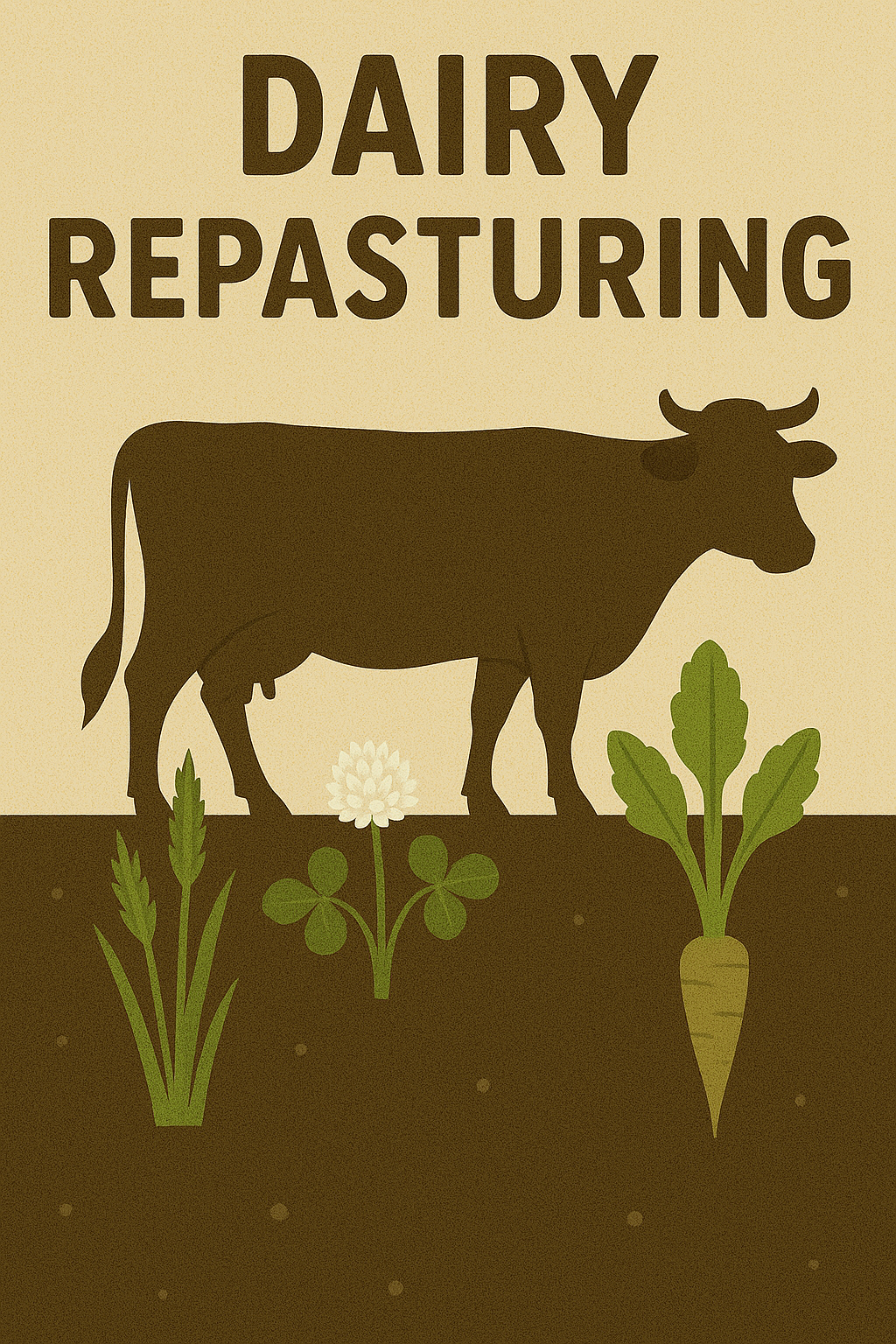
Dairy Repasturing
Repasturing is an essential part of maintaining high-quality dairy pastures that support milk production and ensure long-term farm profitability. Conventional repasturing focuses on proven species like ryegrass, clover, and plantain, offering farmers reliable and straightforward options to boost pasture performance. By following best practices and selecting the right species, dairy farmers can establish pastures that meet their needs for yield, quality, and resilience.
Key Species for Conventional Dairy Pastures
-
Perennial Ryegrass:
-
A cornerstone of dairy pastures, perennial ryegrass is valued for its persistence, high dry matter production, and compatibility with rotational grazing systems.
-
It thrives in a range of climates and provides consistent feed throughout the year, particularly in autumn, winter, and spring.
-
Hybrid Ryegrass:
-
Hybrid ryegrass combines the persistence of perennial ryegrass with the fast growth of an italian ryegrass, making it ideal for farms looking for quick establishment and robust seasonal production.
-
It offers excellent cool-season growth and contributes to high-quality silage or grazing feed.
-
White Clover:
-
As a nitrogen-fixing legume, white clover improves soil fertility while providing high-quality, protein-rich forage for dairy herds.
-
It works well alongside ryegrass and thrives in moderate to high fertility soils, particularly in summer.
-
Plantain:
-
A deep-rooted species, plantain complements ryegrass pastures by improving drought tolerance and reducing nitrogen leaching.
-
It provides highly palatable, mineral-rich feed that enhances animal health and supports sustainable production systems.
Best Time to Repasture
Timing is critical to successful repasturing. The two primary windows for sowing are:
-
Autumn (March–May):
-
Ideal for most regions, as soil moisture levels are generally adequate, and cooler temperatures promote strong establishment before winter.
-
Autumn sowing ensures pastures are well-developed and ready for high spring growth.
-
Spring (September–November):
-
Suitable for paddocks that have been under summer cropping or need rejuvenation. Spring sowing allows for fast establishment and summer grazing.
How to Select a Paddock for Repasturing
Choosing the right paddock is essential to maximise the benefits of repasturing. Consider the following factors:
-
Pasture Condition:
-
Target paddocks with poor ryegrass density, low clover content, or high weed pressure.
-
Soil Fertility:
-
Conduct soil tests to identify deficiencies in nitrogen, phosphorus, potassium, and pH. Address any deficiencies with lime or fertiliser before sowing.
-
Historical Performance:
-
Prioritise underperforming paddocks to optimise overall farm productivity.
Steps to Ensure Successful Repasturing
-
Preparation:
-
Spray out existing pasture to minimise competition and create a clean seedbed.
-
Address soil deficiencies and improve soil structure as needed.
-
Sowing:
-
Drill seed at the recommended depth for even establishment and good seed-to-soil contact.
-
Follow suggested sowing rates for each species to achieve the desired balance in the pasture.
-
Fertilisation:
-
Apply starter fertiliser based on soil test results to support early growth and establishment.
-
Post-Sowing Management:
-
Allow new seedlings to establish before grazing. Once established, use rotational grazing to maintain plant health and pasture quality.
Our Recommended Options
At Pastoral Improvements, we provide high-performance options for conventional repasturing, tailored to meet the specific needs of dairy farms:
-
Tactic Perennial Ryegrass: A fast-establishing, persistent ryegrass variety with excellent cool-season growth.
-
Hercules Plantain: A hardy, mineral-rich forage plant that enhances both pasture quality and soil health.
-
EcoQuad Mix: A balanced mix combining Tactic perennial ryegrass, white clover, red clover and Hercules plantain for reliable, productive pastures.
These species have been carefully selected to ensure high yields, long-term persistence, and excellent forage quality. Contact us to discuss your repasturing goals and find the best solution for your dairy operation.
